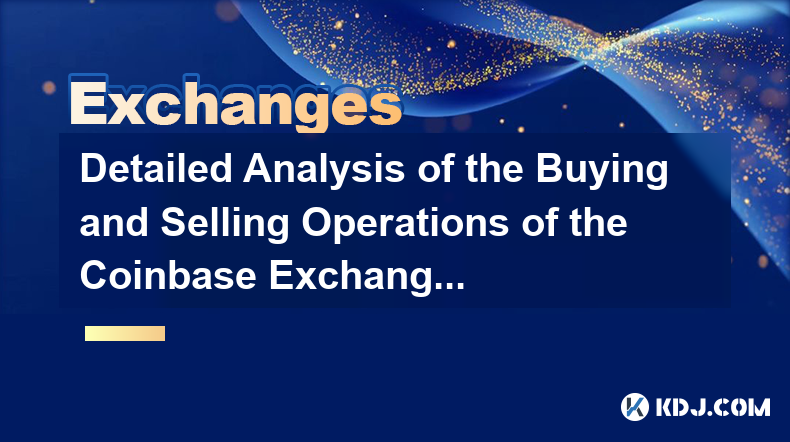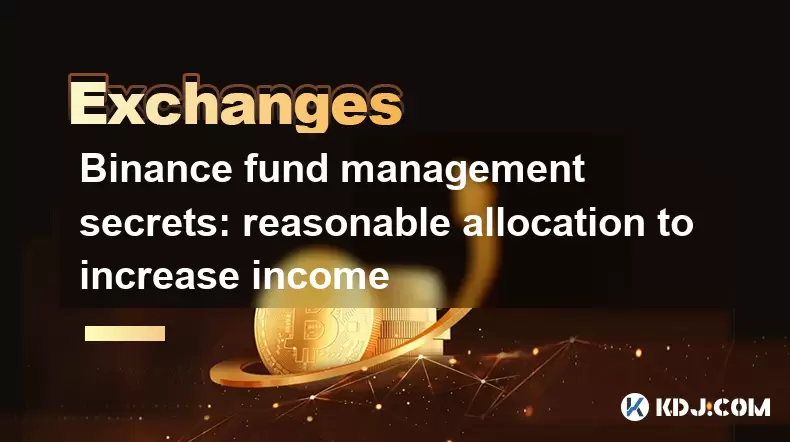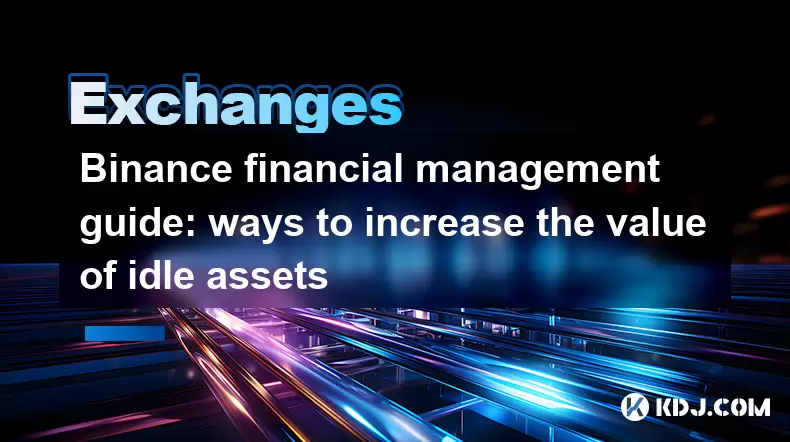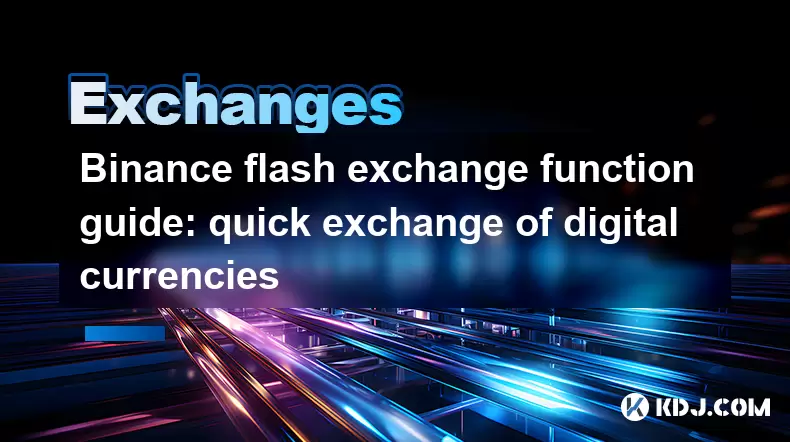-
 Bitcoin
Bitcoin $108,489.6704
1.13% -
 Ethereum
Ethereum $2,502.0528
2.92% -
 Tether USDt
Tether USDt $1.0002
0.00% -
 XRP
XRP $2.1941
0.51% -
 BNB
BNB $655.3375
1.00% -
 Solana
Solana $151.5977
1.27% -
 USDC
USDC $0.9999
0.00% -
 TRON
TRON $0.2768
0.32% -
 Dogecoin
Dogecoin $0.1676
2.86% -
 Cardano
Cardano $0.5675
0.98% -
 Hyperliquid
Hyperliquid $40.6109
7.48% -
 Bitcoin Cash
Bitcoin Cash $500.7746
2.09% -
 Sui
Sui $2.8328
2.03% -
 Chainlink
Chainlink $13.4452
1.26% -
 UNUS SED LEO
UNUS SED LEO $9.1623
0.39% -
 Avalanche
Avalanche $18.2267
2.24% -
 Stellar
Stellar $0.2382
0.00% -
 Toncoin
Toncoin $2.8885
1.68% -
 Shiba Inu
Shiba Inu $0.0...01159
0.91% -
 Litecoin
Litecoin $87.1827
0.88% -
 Hedera
Hedera $0.1511
2.90% -
 Monero
Monero $315.4992
-0.59% -
 Polkadot
Polkadot $3.4663
2.34% -
 Bitget Token
Bitget Token $4.6118
-0.65% -
 Dai
Dai $1.0000
-0.01% -
 Ethena USDe
Ethena USDe $1.0003
0.02% -
 Uniswap
Uniswap $7.2989
4.69% -
 Pepe
Pepe $0.0...01003
5.73% -
 Aave
Aave $275.5616
7.15% -
 Pi
Pi $0.5181
-2.49%
Detailed Analysis of the Buying and Selling Operations of the Coinbase Exchange
Coinbase offers a user-friendly platform for trading various cryptocurrencies, with fees varying by payment method and advanced options available on Coinbase Pro.
Apr 04, 2025 at 05:35 am

Coinbase is one of the most prominent cryptocurrency exchanges globally, known for its user-friendly interface and robust security measures. Understanding the buying and selling operations on Coinbase is crucial for both novice and experienced traders. This article delves into the detailed mechanics of these operations, exploring how transactions are processed, the fees involved, and the various trading options available to users. By gaining a comprehensive understanding of these aspects, traders can optimize their strategies and enhance their trading experience on the platform.
Overview of Coinbase's Trading Platform
Coinbase offers a straightforward trading platform that caters to a wide range of users. The platform supports trading in various cryptocurrencies, including Bitcoin, Ethereum, and Litecoin, among others. Users can access the platform through the website or the mobile app, making it convenient to trade on the go. Coinbase also provides a more advanced trading platform called Coinbase Pro, which offers additional features such as limit orders and advanced charting tools. Understanding the basics of the platform is essential before diving into the specifics of buying and selling operations.
How to Buy Cryptocurrencies on Coinbase
Buying cryptocurrencies on Coinbase is a straightforward process designed to be accessible to users of all experience levels. Here are the steps involved:
Register an Account: First, users need to create an account on Coinbase by providing their email address and setting up a password. They will also need to complete the identity verification process, which involves submitting personal information and a government-issued ID.
Add a Payment Method: After registration, users must add a payment method. Coinbase supports various payment options, including bank transfers, credit/debit cards, and PayPal in some regions. Each method has different processing times and fees.
Select a Cryptocurrency: Users can then browse the available cryptocurrencies on Coinbase and select the one they wish to purchase. Coinbase provides detailed information about each cryptocurrency, helping users make informed decisions.
Enter the Amount: Users need to enter the amount they want to buy, either in the cryptocurrency or their local currency. Coinbase will display the total cost, including any applicable fees.
Review and Confirm: Before finalizing the purchase, users should review the transaction details. Once confirmed, Coinbase will process the order, and the cryptocurrency will be credited to the user's wallet.
Fees Associated with Buying on Coinbase
Understanding the fees associated with buying cryptocurrencies on Coinbase is essential for managing trading costs. Coinbase charges different fees based on the payment method used:
Bank Transfer: This method typically incurs the lowest fees, usually around 1.49% of the transaction value. However, bank transfers may take longer to process, sometimes up to several days.
Credit/Debit Card: Using a credit or debit card is faster but comes with higher fees, often around 3.99% of the transaction value. This method is suitable for users who want to buy cryptocurrencies quickly.
PayPal: In regions where PayPal is supported, the fee is similar to that of credit/debit cards, around 3.99%. PayPal transactions are processed quickly but come with higher fees.
Coinbase Pro: For users who opt for Coinbase Pro, the fee structure is different. It's based on the trading volume and ranges from 0% to 0.50%. This can be more cost-effective for frequent traders.
How to Sell Cryptocurrencies on Coinbase
Selling cryptocurrencies on Coinbase is as straightforward as buying. Here are the steps involved:
Log into Your Account: Users need to log into their Coinbase account to initiate a sell order.
Select the Cryptocurrency: They should then choose the cryptocurrency they wish to sell from their wallet.
Enter the Amount: Users enter the amount of cryptocurrency they want to sell, either in the cryptocurrency itself or in their local currency. Coinbase will display the total amount they will receive after fees.
Choose a Payment Method: Coinbase allows users to sell cryptocurrencies and receive funds via bank transfer or PayPal, depending on the region. Each method has different processing times and fees.
Review and Confirm: Before finalizing the sale, users should review the transaction details. Once confirmed, Coinbase will process the order, and the funds will be transferred to the chosen payment method.
Fees Associated with Selling on Coinbase
Similar to buying, selling cryptocurrencies on Coinbase incurs fees that vary based on the payment method:
Bank Transfer: Selling cryptocurrencies and withdrawing funds via bank transfer typically incurs a fee of around 1.49%. The funds may take a few days to reach the user's bank account.
PayPal: In regions where PayPal is supported, the fee for selling is around 3.99%. PayPal transactions are processed quickly, making it a convenient option for users who need immediate access to their funds.
Coinbase Pro: For users who opt for Coinbase Pro, the fee structure for selling is similar to buying, ranging from 0% to 0.50% based on the trading volume. This can be more cost-effective for frequent traders.
Advanced Trading Options on Coinbase Pro
Coinbase Pro offers advanced trading options that cater to more experienced traders. These options include:
Limit Orders: Users can set a specific price at which they want to buy or sell a cryptocurrency. The order will only be executed if the market reaches the specified price.
Market Orders: These orders are executed immediately at the current market price. Market orders are suitable for users who want to buy or sell quickly.
Stop Orders: A stop order is used to buy or sell a cryptocurrency once it reaches a certain price. It helps users manage risk by setting a predetermined exit point.
Advanced Charting Tools: Coinbase Pro provides advanced charting tools that allow users to analyze market trends and make informed trading decisions. These tools include various indicators and drawing tools.
Security Measures on Coinbase
Security is a top priority for Coinbase, and the platform implements several measures to protect users' funds and personal information. These measures include:
Two-Factor Authentication (2FA): Coinbase requires users to enable 2FA, which adds an extra layer of security to their accounts. Users receive a code on their mobile device that they must enter to log in.
Cold Storage: The majority of users' funds are stored in offline cold storage wallets, which are not connected to the internet. This significantly reduces the risk of hacking.
Insurance: Coinbase has an insurance policy that covers potential losses due to security breaches or theft. This provides an additional layer of protection for users' funds.
Regular Security Audits: Coinbase conducts regular security audits to identify and address potential vulnerabilities. These audits help ensure that the platform remains secure and up-to-date with the latest security standards.
Customer Support and Resources
Coinbase offers various customer support options and resources to help users navigate the platform and resolve any issues they may encounter. These include:
Help Center: Coinbase's Help Center provides detailed articles and guides on various topics, including account setup, trading, and security. Users can find answers to common questions and learn more about the platform's features.
Email Support: Users can contact Coinbase's support team via email for assistance with specific issues. The support team typically responds within 24-48 hours, depending on the volume of inquiries.
Phone Support: In some regions, Coinbase offers phone support for urgent issues. Users can call the support line to speak with a representative and get immediate assistance.
Community Forums: Coinbase has active community forums where users can ask questions, share experiences, and learn from other traders. These forums are a valuable resource for staying updated on the latest developments and best practices.
Common Questions and Answers
Q: What are the fees for buying cryptocurrencies on Coinbase?
A: The fees for buying cryptocurrencies on Coinbase vary based on the payment method. Bank transfers typically incur a fee of around 1.49%, while credit/debit cards and PayPal transactions have a fee of around 3.99%. On Coinbase Pro, the fee structure is based on trading volume and ranges from 0% to 0.50%.
Q: How long does it take to buy cryptocurrencies on Coinbase?
A: The time it takes to buy cryptocurrencies on Coinbase depends on the payment method. Bank transfers may take several days to process, while credit/debit card and PayPal transactions are typically processed within minutes.
Q: Can I sell cryptocurrencies on Coinbase and withdraw funds to my bank account?
A: Yes, users can sell cryptocurrencies on Coinbase and withdraw funds to their bank account. The fee for this transaction is around 1.49%, and the funds may take a few days to reach the user's bank account.
Q: What advanced trading options are available on Coinbase Pro?
A: Coinbase Pro offers advanced trading options such as limit orders, market orders, stop orders, and advanced charting tools. These options cater to more experienced traders and allow for more precise control over trading strategies.
Q: How does Coinbase ensure the security of users' funds?
A: Coinbase implements several security measures to protect users' funds, including two-factor authentication, cold storage, insurance, and regular security audits. These measures help ensure that users' funds and personal information remain secure.
Disclaimer:info@kdj.com
The information provided is not trading advice. kdj.com does not assume any responsibility for any investments made based on the information provided in this article. Cryptocurrencies are highly volatile and it is highly recommended that you invest with caution after thorough research!
If you believe that the content used on this website infringes your copyright, please contact us immediately (info@kdj.com) and we will delete it promptly.
- Ripple XRP, Bitcoin, and Solaris Presale: What's the Buzz?
- 2025-06-30 18:50:11
- SpaceX, Mirror Tokens, and Investors: A Wild Ride to the Future?
- 2025-06-30 19:10:22
- Arbitrum (ARB) and Robinhood: Partnership Rumors Fuel Price Surge to $0.4289?
- 2025-06-30 19:10:22
- Jasmy Coin, Bitcoin, and the Rise of Solaris Presale: What's the Buzz?
- 2025-06-30 18:30:12
- XRP, SEC, and Ripple: A New Chapter?
- 2025-06-30 19:15:13
- Arbitrum's ARB Price Surges Amid Robinhood Partnership Buzz: A New York Minute on Crypto
- 2025-06-30 19:30:12
Related knowledge

Binance spot market analysis: seize the best time to buy and sell
Jun 19,2025 at 04:56pm
Understanding the Binance Spot MarketThe Binance spot market is one of the most popular platforms for cryptocurrency trading globally. It allows users to trade digital assets at current market prices, making it essential for traders aiming to buy low and sell high. Unlike futures or margin trading, spot trading involves direct ownership of the asset aft...

Binance fund management secrets: reasonable allocation to increase income
Jun 22,2025 at 02:29pm
Understanding Binance Fund ManagementBinance fund management involves strategic allocation of your cryptocurrency assets to optimize returns while managing risk. The key to successful fund management lies in understanding how different investment options on the Binance platform can be utilized to create a diversified portfolio. This includes spot tradin...

Binance trading pair selection skills: find the best buying and selling combination
Jun 23,2025 at 02:49am
Understanding the Basics of Trading Pairs on BinanceBefore diving into trading pair selection skills, it's essential to understand what a trading pair is. On Binance, a trading pair refers to two cryptocurrencies that can be traded against each other. For example, BTC/USDT means Bitcoin is being traded against Tether. Each trading pair has its own liqui...

Binance new coin mining strategy: participate in Launchpool to earn income
Jun 23,2025 at 11:56am
What is Binance Launchpool and how does it work?Binance Launchpool is a feature introduced by the world’s largest cryptocurrency exchange, Binance, to allow users to earn new tokens through staking. This platform enables users to stake their existing cryptocurrencies (such as BNB, BUSD, or other supported assets) in exchange for newly launched tokens. T...

Binance financial management guide: ways to increase the value of idle assets
Jun 19,2025 at 11:22pm
Understanding Idle Assets in the Cryptocurrency SpaceIn the fast-paced world of cryptocurrency, idle assets refer to digital currencies that are not actively being used for trading, staking, or yield farming. Holding these funds in a wallet without utilizing them means missing out on potential growth opportunities. Binance, as one of the leading platfor...

Binance flash exchange function guide: quick exchange of digital currencies
Jun 23,2025 at 12:29pm
What is the Binance Flash Exchange Function?The Binance Flash Exchange function is a powerful tool designed to allow users to instantly swap between supported cryptocurrencies without the need for placing traditional buy/sell orders. This feature simplifies the trading process by offering a direct exchange mechanism, eliminating the requirement to conve...

Binance spot market analysis: seize the best time to buy and sell
Jun 19,2025 at 04:56pm
Understanding the Binance Spot MarketThe Binance spot market is one of the most popular platforms for cryptocurrency trading globally. It allows users to trade digital assets at current market prices, making it essential for traders aiming to buy low and sell high. Unlike futures or margin trading, spot trading involves direct ownership of the asset aft...

Binance fund management secrets: reasonable allocation to increase income
Jun 22,2025 at 02:29pm
Understanding Binance Fund ManagementBinance fund management involves strategic allocation of your cryptocurrency assets to optimize returns while managing risk. The key to successful fund management lies in understanding how different investment options on the Binance platform can be utilized to create a diversified portfolio. This includes spot tradin...

Binance trading pair selection skills: find the best buying and selling combination
Jun 23,2025 at 02:49am
Understanding the Basics of Trading Pairs on BinanceBefore diving into trading pair selection skills, it's essential to understand what a trading pair is. On Binance, a trading pair refers to two cryptocurrencies that can be traded against each other. For example, BTC/USDT means Bitcoin is being traded against Tether. Each trading pair has its own liqui...

Binance new coin mining strategy: participate in Launchpool to earn income
Jun 23,2025 at 11:56am
What is Binance Launchpool and how does it work?Binance Launchpool is a feature introduced by the world’s largest cryptocurrency exchange, Binance, to allow users to earn new tokens through staking. This platform enables users to stake their existing cryptocurrencies (such as BNB, BUSD, or other supported assets) in exchange for newly launched tokens. T...

Binance financial management guide: ways to increase the value of idle assets
Jun 19,2025 at 11:22pm
Understanding Idle Assets in the Cryptocurrency SpaceIn the fast-paced world of cryptocurrency, idle assets refer to digital currencies that are not actively being used for trading, staking, or yield farming. Holding these funds in a wallet without utilizing them means missing out on potential growth opportunities. Binance, as one of the leading platfor...

Binance flash exchange function guide: quick exchange of digital currencies
Jun 23,2025 at 12:29pm
What is the Binance Flash Exchange Function?The Binance Flash Exchange function is a powerful tool designed to allow users to instantly swap between supported cryptocurrencies without the need for placing traditional buy/sell orders. This feature simplifies the trading process by offering a direct exchange mechanism, eliminating the requirement to conve...
See all articles

























































































